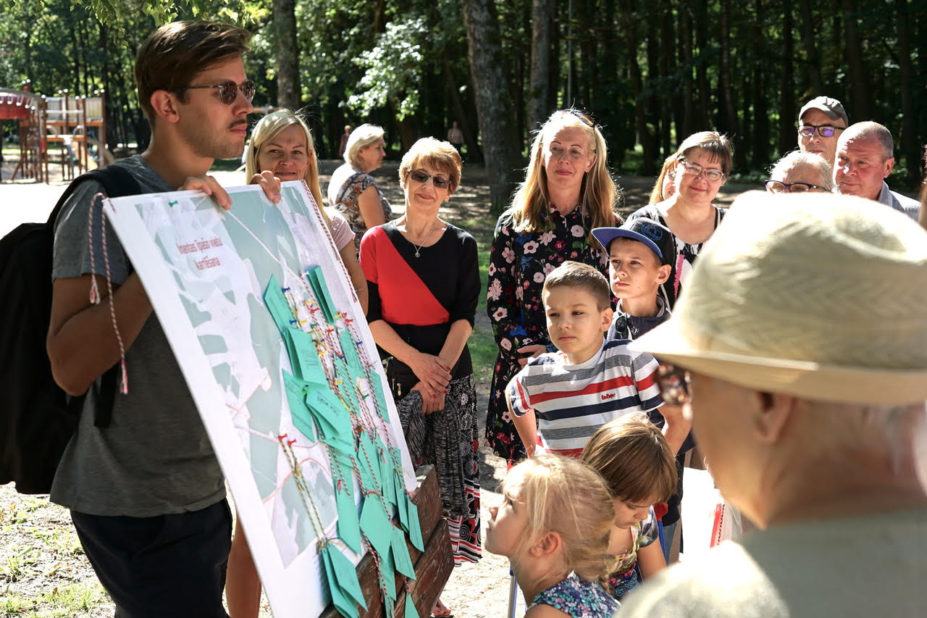 Case studies
Case studies
- Where: Imanta neighborhood, Riga, Latvia
- Type of space: neighbourhood, residential district consisting of large blocks of flats, industrial area, green area
- Number of residents: 44 189
- Area size: 9 km2, but the festival took place in two sites
- Organisers
Nongovernmental organisation: Urban Institute / Anete Vanaga
Case Study
Imanta Festival
Community-integrating cultural festival.
What happened?
Imanta community festival was an event aimied to strengthening the local community and the neighbourhood image and identity, foster integration of different ethnic groups and challenge the existing stereotypes. People were invited to spend time in the neighbourhood, get to know the place better and meet the neighbours. Additional to concerts, performances and activities for children, many participative urban/community workshops such as street art, gardening, building urban furniture, repainting of worn-out sport equipment etc. took place. During the festival, data from local inhabitants were gathered and the community map of special places of the neighbourhood created.
- Who can help?
- Cultural organisations – schools, creative initiatives.
- Local NGOs.
- City administrative units.

Why?
Residents of Imanta represent bilingual community, two ethnic groups, all income groups and different perceptions of the neighborhood. Lack of shared identity was the reason to create an event uniting the local community and change the existing stereotypes of Imanta.
Festival was meant to build stronger ties and foster cooperation between local NGOs but also to strenghten the cooperation between decision makers and inhabitants. In addition, planned participatory activites were supposed to strenghten democracy in the community.
Organisers wanted also to have a long-term imprint in the environment as a reminder of the positive effects of collective activism.

How? (tools & methods)
- Due to active and integrated local communities organisers prepared workshops for children and many other activities for adults (street art, gardening, building street furniture repainting of worn-out sport equipment etc.). There was also the process of mapping conducted along with data gathering. People were willing to share their experience and information during mapping which organisers pointed to as the most beneficial participation tool. They also appreciated activities related to kids, as the parents and other family members also got automatically engaged and usually were more open to join other activities.
- The preparation and realisation phase before actual event consisted of:
- identifying the neighbourhood to focus on
- discussing the proposed initiative with the local community and NGOs
- attracting funding
- experiencing exchange with partners from Helsinki, Tallinn and Kiev
- planning the event and activities
- cooperation with the municipality including getting the permits for public events
- informing and inviting the local community
- practicalities (technicalities) of the event
- To sum up the project organisers analyzed gathered data and evaluated long-term results.

For whom?
- All-age inhabitants from the Imanta were invited to take part in the project.
What worked out?
Organisers engaged stronger cooperation between Imanta’s local NGOs and succeeded in working together with Municipal Pardaugava Executive Board that could be a starting point for deeper cooperation in Imanta in near future. The festival proved that cultural/community activities that usually take place in other neighbourhoods are also needed in Imanta. In the events 3-4 times more people participated than expected. The place became more attractive with its street art, gardening etc. Through participatory activities the community became more bound to the place.
How much time is needed?
process: 7 months
event: 2 days (12:00-18:00)
